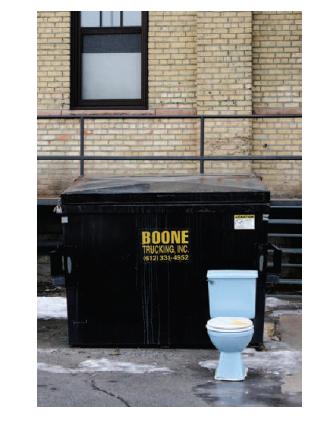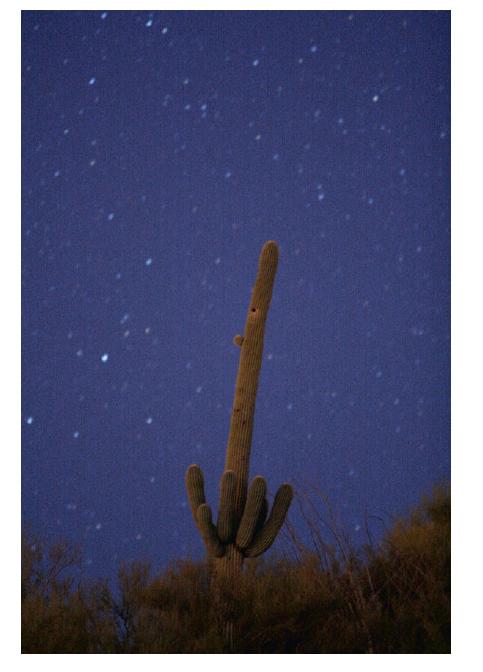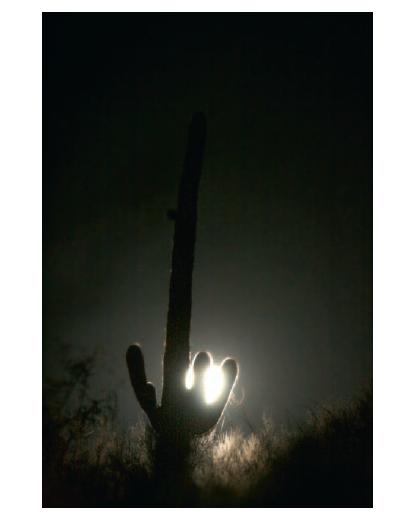Part 5
The Subjects
_____________________
The Subjects
PRO TIPS AND TRICKS FOR GREAT IMAGES!
The Rebel is an amazing camera, and that’s not an overstate-ment. With its Mark III technology it’s capable of returning great images of just about anything. As a professional photog-rapher, I’ve picked up a number of tricks and habits over the years that have defined my style. If you’re new to the DSLR world, or to photography in general, here are some of my favorites. I hope they will help you find your style as well.

PEOPLE
Watch for the “moment.” Interaction within a group, large or small, will tell the tale much better than a static shot of people looking at the camera. Try to be unobtrusive. Keep the camera to your eye, making exposures as opportunities present themselves. Above all, avoid the urge to “chimp” your images, looking at the LCD after each picture to see what you got. It’s distracting to the subjects, onlookers, and you. Besides, you might miss something.

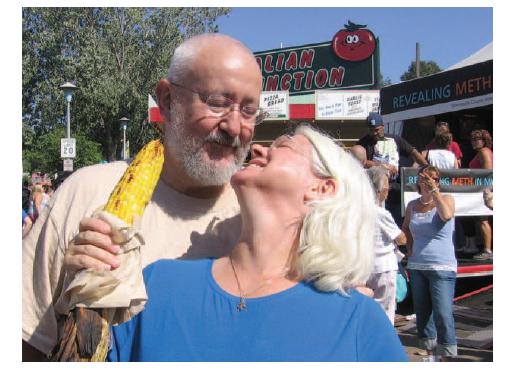
Isolate your subject. Use a telephoto and a large aperture (200 mm and f2.8 in this case) to put emphasis on the subject by making the background out of focus. If at all possible, try to position yourself so that the background is at least partially in shadow. Doing so will lend additional emphasis to the subject. Nice bokeh!
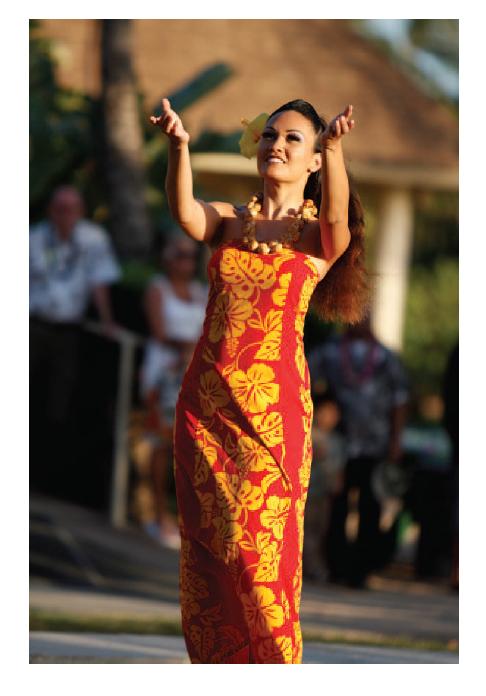
Pan the camera. Following action and using a slow shutter speed (1/5 second here, but shutter speed should be chosen for the speed of the action) results in a partially blurred image with some portion of the image recognizably in focus. To pan the camera successfully, find the subject and start panning before tripping the shutter. Note the location of the part of the image you want to remain important and its place in the viewfinder. Keep it there for the duration of the pan. It’s also a good idea to pan past the end of the exposure, as you’ll avoid stopping the camera movement too soon.
If you’re working in the Basic mode, the flash may pop up. Switch to Tv, and set the shutter speed you want. This shot would be lifeless if the flash had gone off.
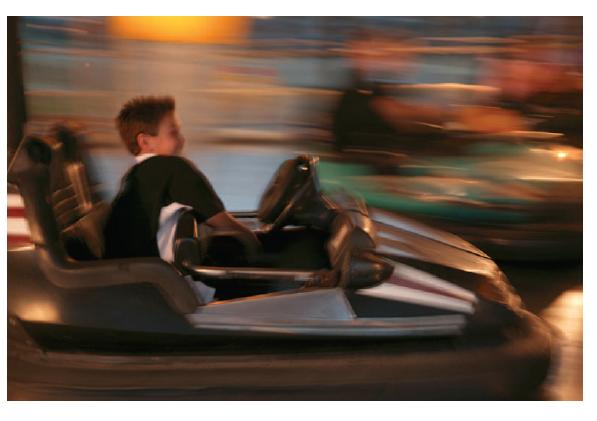
Wait for the peak of the action. When something moves back and forth, there is a short time at each end of the arc where some action freezes. Situations like this require a shutter speed fast enough to catch the peak but slow enough to allow faster movement to blur. This hula dancer was photographed under stage light at 1/15 second, f3.5, ISO 400. The Tungsten (Incandescent) white balance preset was also used, along with Continuous Shooting, to increase the chance for a successful image, as it’s almost impossible to get this with just one shot.

Follow action with Continuous Shooting and AI Servo. It looks brightly lit, but this waterfall was tucked away in a dark rainforest and it was an overcast day, which necessitated using ISO 1600 to get the fastest shutter speed possible, 1/200 second. Focus was locked on the diver as she stood on the rock, preparing herself. When she flexed her knees I started shooting, following her fall by keeping her in the same place in the viewfinder as long as possible.
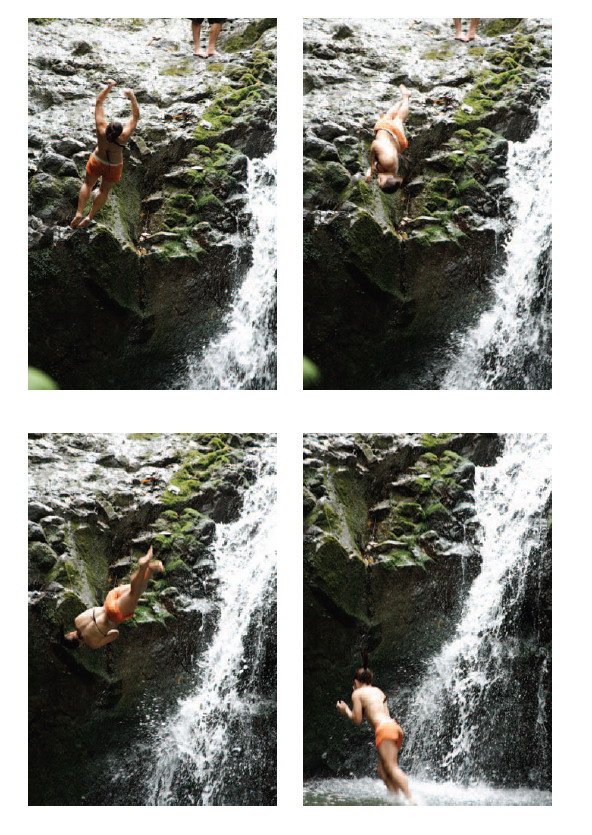
Use Av to mix flash and ambient light. The Av mode will keep the shutter open as long as it takes to get a proper exposure of the ambient light in any scene, a feature you can exploit for shots like this because Av takes no notice of the flash. In other words, if the correct exposure of a scene is 5 seconds at f5.6, that’s how long the shutter will stay open. If the ambient light is falling primarily on the background, as it was here, the camera’s flash will illuminate the subject while the ambient illuminates the background. It takes some practice and not every shot works, but it’s beautiful when it does.
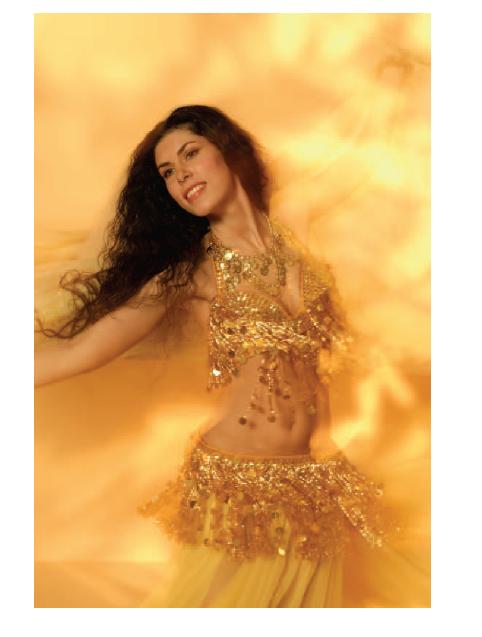
TRAVEL
For photography buffs, travel is more of an adventure than a vacation. My camera is always with me when I travel, because I consider photography such an integral part of my psyche that I just can’t leave it behind. Taking pictures is just too much fun.
Watch where you’re going. Whether you’re shooting just to document your trip or to fill your stock files, be sure to stop when the scene looks “right” (and when it is safe to do so, it has of course). As an aside, colors are almost always more saturated after it has rained.
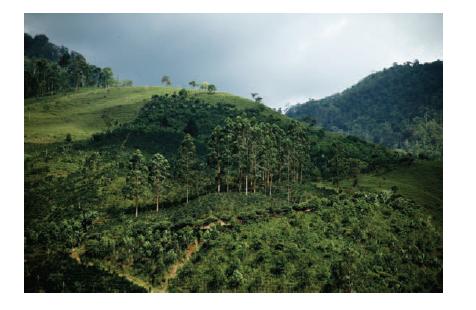
Wait for “sweet light ” whenever you can. At the magic hour just before and immediately after sunset, colors are warm and rich, unlike you will see them at any other time of the day.

Look down. Great compositions are not always found at eye level. This plant was slightly off the path, but moving the camera closer to it and pointing the lens down in an atypical manner revealed this unusual view.

Isolate details. Much as you would with people, get close to the subject with a longer focal length lens and use a large enough aperture to gently blur out the background.
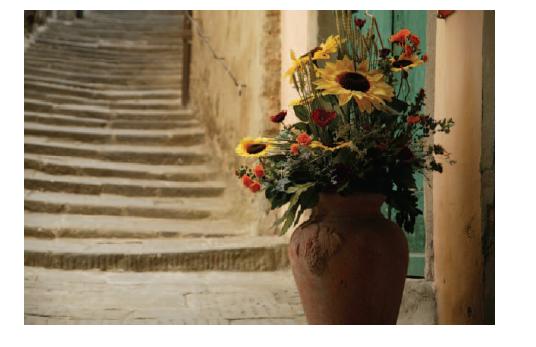
Use local architecture to frame areas of interest. If the exposure had been made for the buildings, the resulting overexposure of the landscape would have made a rather ugly picture. The landscape by itself would have been just as dull, given the early morning fog. As it is, the buildings add a sense of interest and antiquity to a tranquil scene.
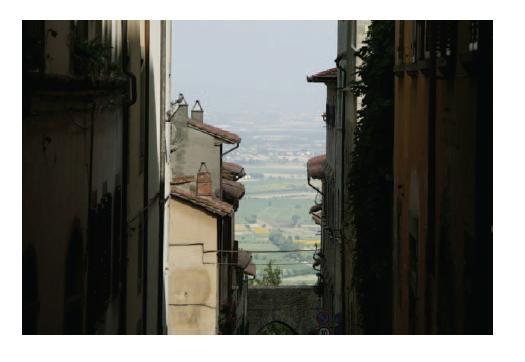
Use shadows to your advantage. Because few people like to see people they don’t know in their travel photos (but tourists are everywhere), use building shadows to silhouette your fellow travelers and add visual interest to your shots beyond simple documentation of your location. Also, try to keep your fellow travelers’ backs to you. That makes them even more anonymous.

Anonymous people add interest to patterned compositions. Architecture, and the repetition of detail, presents many opportunities to record line and form, and you should certainly take advantage of that whenever possible. Images of this nature, however, are actually improved by the addition of a human being into the shot, because the scale of the building becomes apparent as the design becomes humanized. Obviously, this is not a situation that you can control, but you certainly should photograph it when it arises.

Use Exposure Compensation to saturate the colors of sunset. Depending on which metering mode you use, you may find it valuable to dial in Exposure Compensation to get even richer colors than your eyes will note.
The first image, using the Av mode, did a terrific job of photographing exactly how the sky looked just a few moments before sunset. The second image, made just a few moments later with a 1 stop Exposure Compensation, represents this sunset more as we imagine it. This is now one of those idyllic images we see in our mind’s eye.
Shoot the icons. In hundreds, if not thousands, of locations around the world there are iconic images that represent the location. For almost 70 years, the USS Arizona has been leaking a small amount of oil a day since it sank in 1941. Arguments have been presented on both sides for stopping it or letting it continue. The point is that those leaks represent the monument possibly more than the actual monument itself.
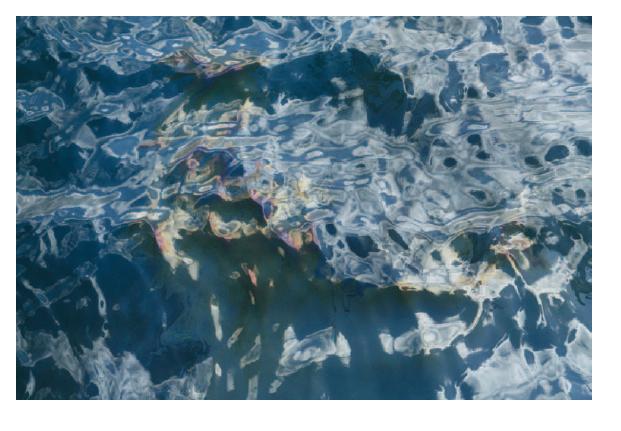
SHOOTING TIP
In situations where I’m photographing many items or situations over the course of the day, I’ve found it valuable to also photograph my notes. When I find an item of interest that’s not immediately identifiable I’ll make a note with a black marker in a small notebook that I keep in my gadget bag. The marker makes the note easy to read, even from a catalog thumbnail, and helps tremendously when I need to identify a subject.
The best part? It costs nothing to shoot the note, which stays with the file unless you delete it.
You can also take a picture of a menu, napkin, or other identifier to help you keep track of where you were or what you did.
Bad weather is your friend. Don’t hunker down in your hotel room, get out there and shoot. This blizzard was a nasty event that lasted the better part of two days, caused me to miss a flight, and basically made my life miserable as far as my actual job was concerned. The bottom line, though, is that its ferocity was photographically beautiful.
In between my actual location job, I made several hundred images of this blizzard within just a block or two of my hotel. Yes, it was unpleasant, but so what? If the picture’s everything, what’s a little frostbite among friends?

Shoot after sunset, but try different presets. Your Rebel’s sensor is an amazing instrument. Using the Av mode, the sensor can read and communicate a correct aperture/shutter combination to the processor to produce wonderful images for you, but, as I’ve noted before, different Color Balance presets produce different colors.
You’ll need to use a tripod anyway, so take another minute or two to rack through the choices, just to see what might happen. This first image was made with the Daylight preset, the second with the Incandescent preset.
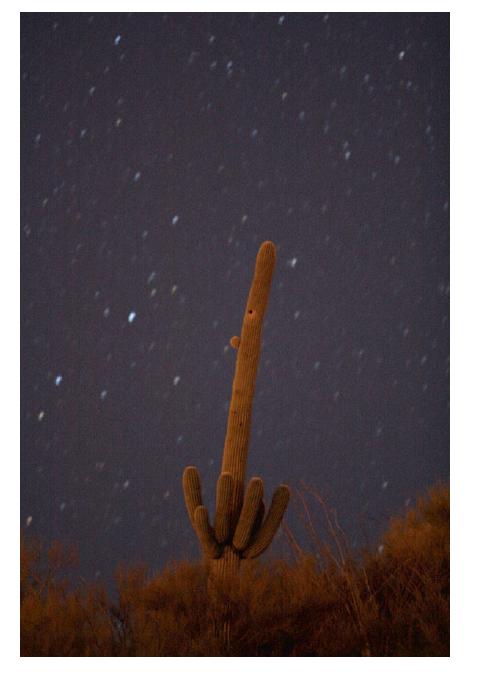
By the way, your Rebel is perfectly capable of metering moonlight as well as sunlight. Should you be lucky enough to see the moon rise behind a nice composition, well, bang away. You may need to do some Exposure Compensation, because the moon will be such a bright spot in the dark heavens, but playing with the camera will be worth the results.
PETS AND WILDLIFE
Animals are fun to shoot, and I don’t mean that in a bad way. Animals, each with its own personality, make marvelous subjects for your camera, even if you have to actively seek them out. House pets? A favorite subject, always, just for grins.
Get in close. My wife and I were invited to visit friends in Costa Rica, and, naturally, I took a camera. After dinner, while enjoying an adult beverage, we heard noises that sounded amphibian but were much louder than what we’d ever heard around the Minnesota lake near our home. Our friends explained that local frogs found their way into the swimming pool every evening, had a great time while making a lot of noise, and left as the sun came up.
This, I had to see.
With my 70-200 mm f2.8 lens, I tried to be as stealthy as possible as I made my way to the pool. Little did I know that the frogs couldn’t have cared less about my presence, showing little or no apprehension when I got on my knees and lowered my camera down to their level. This big guy, who might have defied me had I been wearing a Speedo, instead let me shoot multiple frames at f4 with a bounce-modified flash until he tired of the publicity and scooted off to the other side of the pool.

Watch and wait. Take note of places where wildlife will gather, pull up a chair, mount your telephoto lens, and wait for the moment. As always, large apertures will limit the depth of field in an image and blur the background.

In most small towns in Europe, town cats own the city. Everyone knows who they are, feeds them, even cares for them if necessary. They are not only known to the townspeople, they’re also known to local pets and are greeted with anticipation and affection. Should you see this scenario unfold, shoot throughout the episode. If a local townsperson walks into camera range, keep shooting. There will be one frame in the group that sums up the entire experience.

Get down to your pet’s level. You’ll get a peer’s eye view of your little friend.

Pets do funny, stupid, things because they’re comfortable with us and love us. Keep your camera at the ready. They won’t mind a shot or two.

HUMOR
Always, no matter where you are, keep your eyes open for humorous moments. It doesn’t matter where your sense of humor leads you because your audience, already familiar with you, will laugh at your ability to see the world the way you do.
